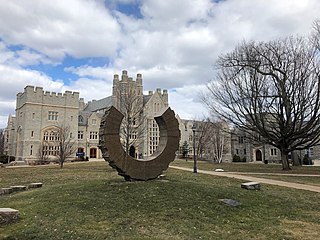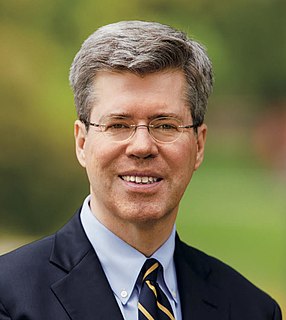Related Research Articles
In the United States, a state supreme court is the highest court in the state judiciary of a U.S. state. On matters of state law, the judgment of a state supreme court is considered final and binding in both state and federal courts.

The government of California is the governmental structure of the U.S. state of California as established by the California Constitution. California uses the separation of powers system to structure its government. It is composed of three branches: the executive, consisting of the Governor of California and the other constitutionally elected and appointed officers and offices; the legislative, consisting of the California State Legislature, which includes the Assembly and the Senate; and the judicial, consisting of the Supreme Court of California and lower courts. There is also local government, consisting of counties, cities, special districts, and school districts, as well as government entities and offices that operate independently on a constitutional, statutory, or common law basis. The state also allows direct participation of the electorate by initiative, referendum, recall and ratification.

Cornell Law School is the law school of Cornell University, a private Ivy League university in Ithaca, New York. One of the five Ivy League law schools, it offers four law degree programs, JD, LLM, MSLS and JSD, along with several dual-degree programs in conjunction with other professional schools at the university. Established in 1887 as Cornell's Department of Law, the school today is one of the smallest top-tier JD-conferring institutions in the country, with around 200 students graduating each year. Cornell Law School has consistently ranked within the top tier of American legal institutions, known as the T14.

The Court of Appeals of Maryland is the highest court of the U.S. state of Maryland. The court, which is composed of one chief judge and six associate judges, meets in the Robert C. Murphy Courts of Appeal Building in the state capital, Annapolis. The term of the Court begins the second Monday of September. The Court is unique among American courts in that the judges wear red robes. The Maryland Court of Appeals joins the New York Court of Appeals in being the only two state highest courts to bear the name "Court of Appeals" rather than "Supreme Court"(although Texas has a court of appeals that is the highest criminal court in the state).

The University of Connecticut School of Law is the law school associated with the University of Connecticut and located in Hartford, Connecticut. It is the only public law school in Connecticut and one of only four in New England. In 2020 it enrolled 488 JD students.
In law, a per curiam decision is a ruling issued by an appellate court of multiple judges in which the decision rendered is made by the court acting collectively. In contrast to regular opinions, a per curiam does not list the individual judge responsible for authoring the decision, but minority concurring and dissenting opinions are signed.

The Supreme Court of Missouri is the highest court in the state of Missouri. It was established in 1820 and is located at 207 West High Street in Jefferson City, Missouri. Missouri voters have approved changes in the state's constitution to give the Supreme Court exclusive jurisdiction – the sole legal power to hear – over five types of cases on appeal. Pursuant to Article V, Section 3 of the Missouri Constitution, these cases involve:
Senior status is a form of semi-retirement for United States federal judges. To qualify, a judge in the federal court system must be at least 65 years old, and the sum of the judge's age and years of service as a federal judge must be at least 80 years. As long as senior judges carry at least a 25 percent caseload or meet other criteria for activity, they remain entitled to maintain a staffed office and chambers, including a secretary and their normal complement of law clerks, and they continue to receive annual cost-of-living increases. Senior judges vacate their seats on the bench, and the president may appoint new full-time judges to fill those seats.

Thomas Eugene Baker is a constitutional law scholar, Professor of Law, and founding member of the Florida International University College of Law. With four decades of teaching experience, Baker has authored eighteen books, including two leading casebooks, has published more than 200 scholarly articles in leading law journals, and has received numerous teaching awards.

The California Courts of Appeal are the state intermediate appellate courts in the U.S. state of California. The state is geographically divided along county lines into six appellate districts. The Courts of Appeal form the largest state-level intermediate appellate court system in the United States, with 106 justices.

The Arizona Supreme Court is the state supreme court of the U.S. state of Arizona. Sitting in the Supreme Court building in downtown Phoenix, the court consists of a chief justice, a vice chief justice, and five associate justices. Each justice is appointed by the governor of Arizona from a list recommended by a bipartisan commission. Justices stand for retention in an election two years after their appointment and then every six years. They must retire at age 70.
Seton Hall University School of Law is the law school of Seton Hall University, and is located in downtown Newark, New Jersey. Seton Hall Law is the only private law school in New Jersey, and, according to the U.S. News & World Report rankings, is the top-ranked of the two law schools in the state. The school confers three law degrees: Juris Doctor, Master of Laws, and Master of Science in Jurisprudence. Founded in 1951, it is accredited by the American Bar Association (ABA), and is also a member of the Association of American Law Schools (AALS).

The Massachusetts Appeals Court is the intermediate appellate court of Massachusetts. It was created in 1972 as a court of general appellate jurisdiction. The court is located at the John Adams Courthouse at Pemberton Square in Boston, the same building which houses the Supreme Judicial Court and the Social Law Library.
John E. Simonett was an attorney and associate justice of the Minnesota Supreme Court. He was famous for his wit and thoughtfulness, characteristics reflected both in his judicial opinions, and in his writings and speeches. In 2007, he was named one of the 100 most influential attorneys in Minnesota history. Of his six daughters and sons, two became judges, one serving as the fourth Chief Judge of the Minnesota Court of Appeals from 1994 to 1995.

The South Carolina Court of Appeals is the intermediate-level appellate court for the state of South Carolina.
The Judicial Conference of the United States, formerly known as the Conference of Senior Circuit Judges, was created by the United States Congress in 1922 with the principal objective of framing policy guidelines for administration of judicial courts in the United States. The Conference derives its authority from 28 U.S.C. § 331, which states that it is headed by the Chief Justice of the United States and consists of the Chief Justice, the chief judge of each court of appeals federal regional circuit, a district court judge from various federal judicial districts, and the chief judge of the United States Court of International Trade.

Joseph Dinneen Kearney is Dean and Professor of Law at Marquette University Law School in Milwaukee, Wisconsin. He is a scholar of civil litigation practice and procedure.

The Alabama Court of Criminal Appeals is one of two appellate courts in the Alabama judicial system. The court was established in 1969 when what had been one unitary state Court of Appeals was broken into a criminal appeals court and a civil appeals court. The unitary Court of Appeals had been operative since 1911. The Court of Criminal Appeals is the linear descendant of the unitary Court of Appeals as its predecessor judges were automatically assigned to the Court of Criminal Appeals in 1969. At that time the court only had three judges, but that was changed to five in 1971. The court is housed in the Heflin-Torbert Judicial Building in downtown Montgomery, Alabama.

The Supreme Court of the State of New York, Appellate Division, First Judicial Department, or simply the First Department, is one of the four geographical components of the New York Supreme Court, Appellate Division, the intermediate appellate court of the State of New York. Its courthouse is located in Manhattan, New York City.
In law, an appeal is the process in which cases are reviewed by a higher authority, where parties request a formal change to an official decision. Appeals function both as a process for error correction as well as a process of clarifying and interpreting law. Although appellate courts have existed for thousands of years, common law countries did not incorporate an affirmative right to appeal into their jurisprudence until the 19th century.
References
- James D Hopkins, "The Role of an Intermediate Appellate Court" (1974 to 1975) 41 Brook L Rev 459 HeinOnline
- W Warren H Binford, Preston C Greene, Maria C Schmidlkofer, Robert M Wilsey and Hillary A Taylor, "Seeking Best Practices among Intermediate Courts of Appeal: A Nascent Journey" (2007) 9 The Journal of Appellate Practice and Process 37 (Article 4) (No 1, Spring 2007) Bowen Law Repository.
- Calvert Magruder, "The Trials and Tribulations of an Intermediate Appellate Court" (1958) 44 Cornell Law Quarterly 1 (No 1, Fall 1958) Cornell
- Laurence C Harmon and Gregory A Lang, "A Needs Analysis of an Intermediate Appellate Court" (1981) 6 or 7 William Mitchell Law Review 51 (article 7) (No 1) Mitchell Hamline
- McHugh, "Law Making in an Intermediate Appellate Court: The New South Wales Court of Appeal" (1987) 11 The Sydney Law Review 183 (No 2, March 1987) AustLII
- Alan B Handler, "Justice at the Intermediate Appellate Level: The New Jersey Appellate Division" (1979) 10 Seton Hall Law Review 58 Seton Hall University
- Daryl R Fair, "State Intermediate Appellate Courts: An Introduction" (1971) 24 Political Research Quaterly 415 (No 3, September 1971) SAGE journals
- Richard B Hoffman and Barry Mahoney, "Managing caseflow in State Intermediate Appellate Courts: What Mechanisms, Practices, and Procedures can work to reduce Delay?" (2002) 35 Indiana Law Review 467 McKinney
- Kevin M Scott, "Understanding Judicial Hierarchy: Reversals and the Behavior of Intermediate Appellate Judges" (2006) 40 Law & Society Review 163 (No 1, March 2006) JSTOR
- John W Poulos and Bruce D Varner, "Review of Intermediate Appellate Court Decisions in California" (1963) 15 Hastings Law Journal 11 (No 1) UC Hastings